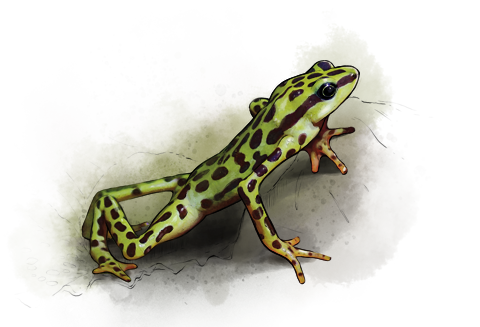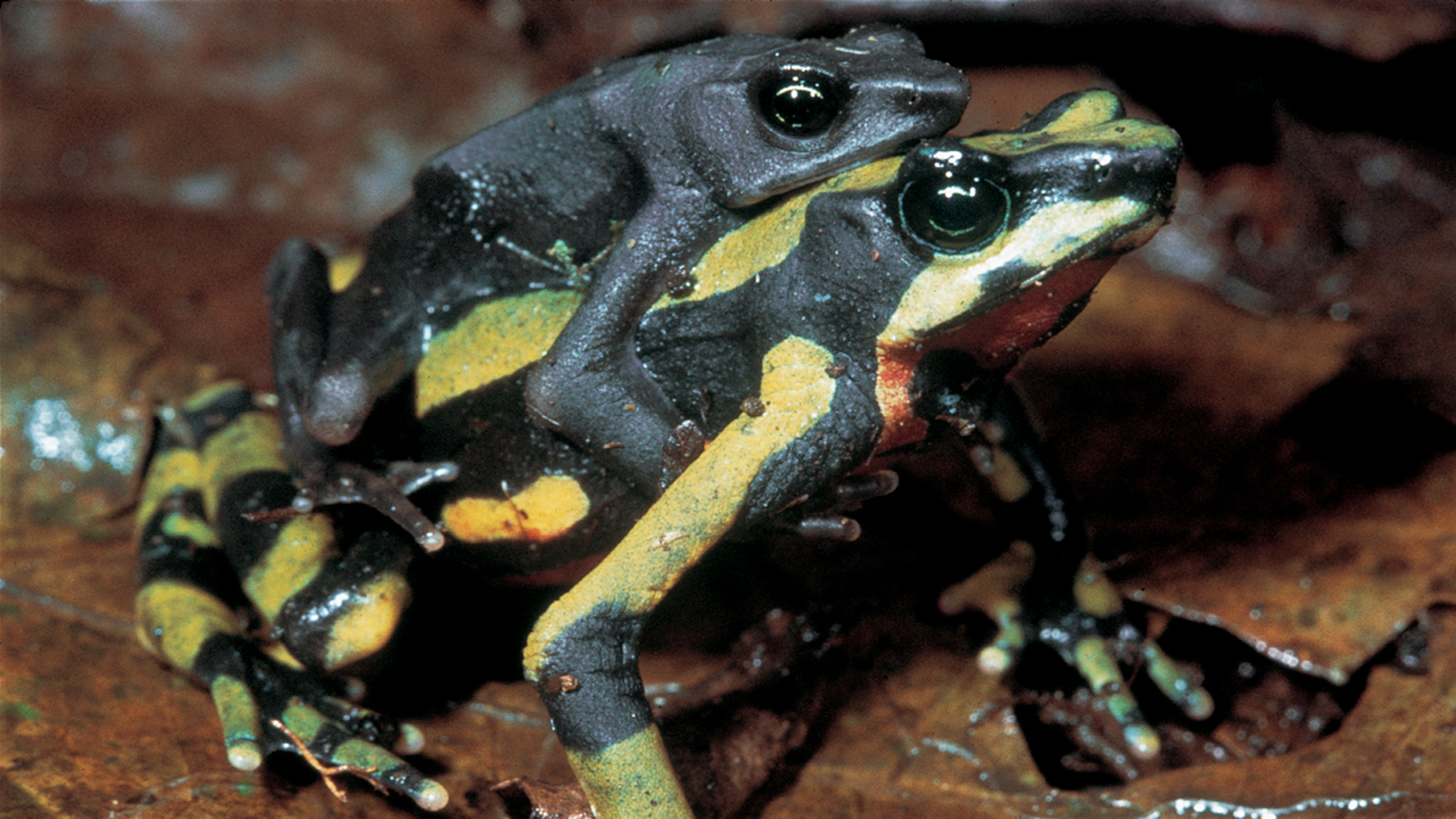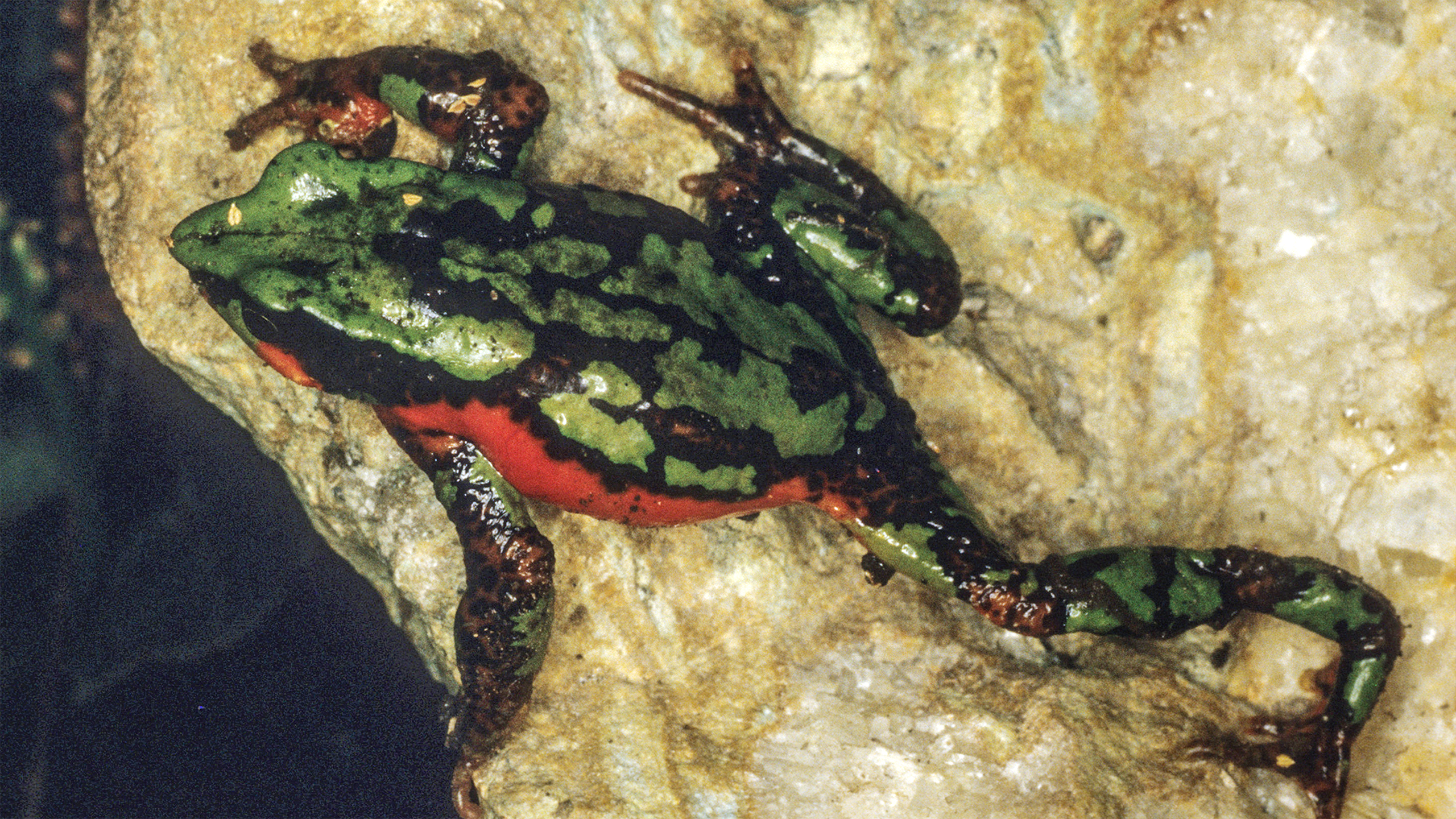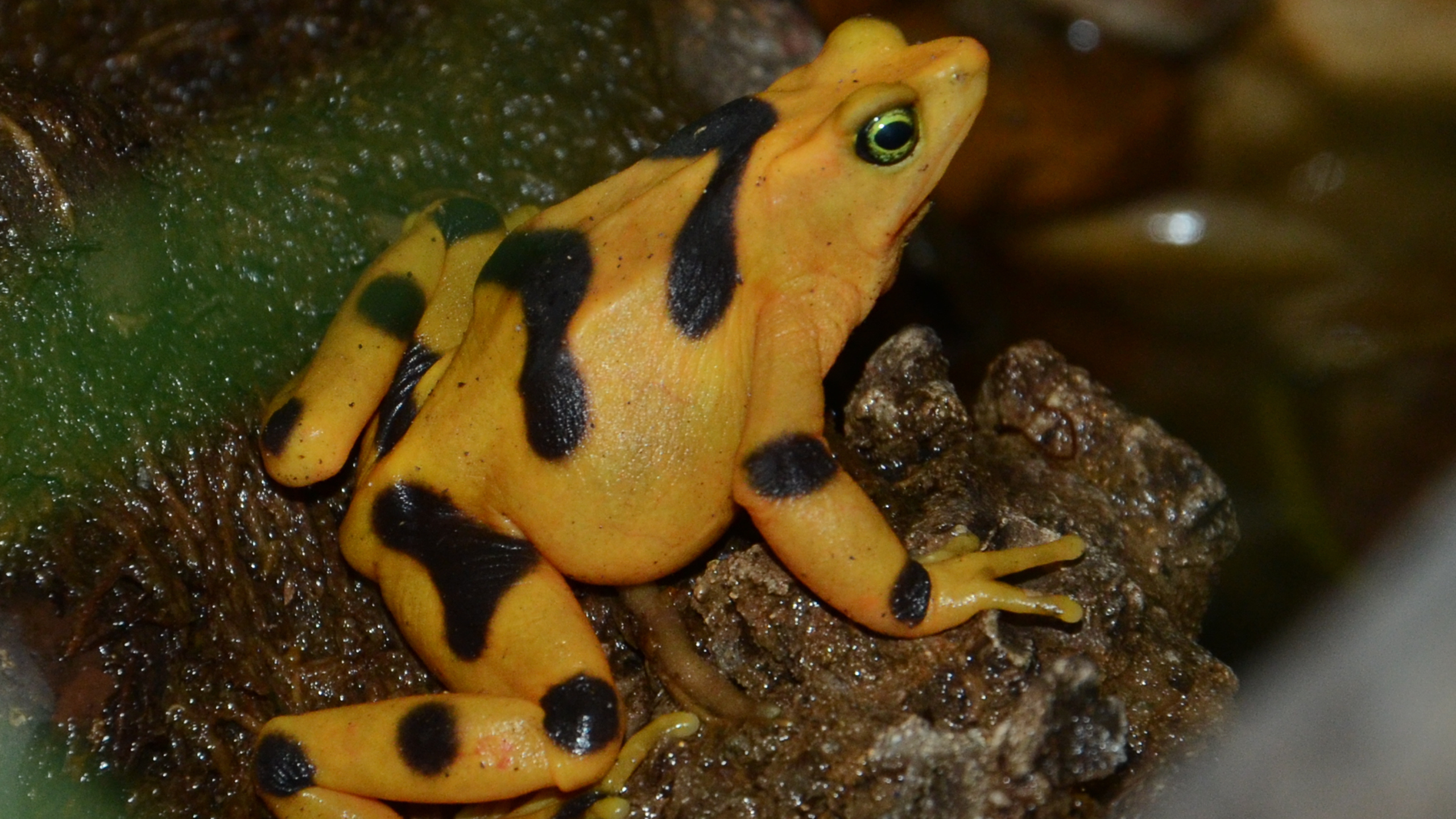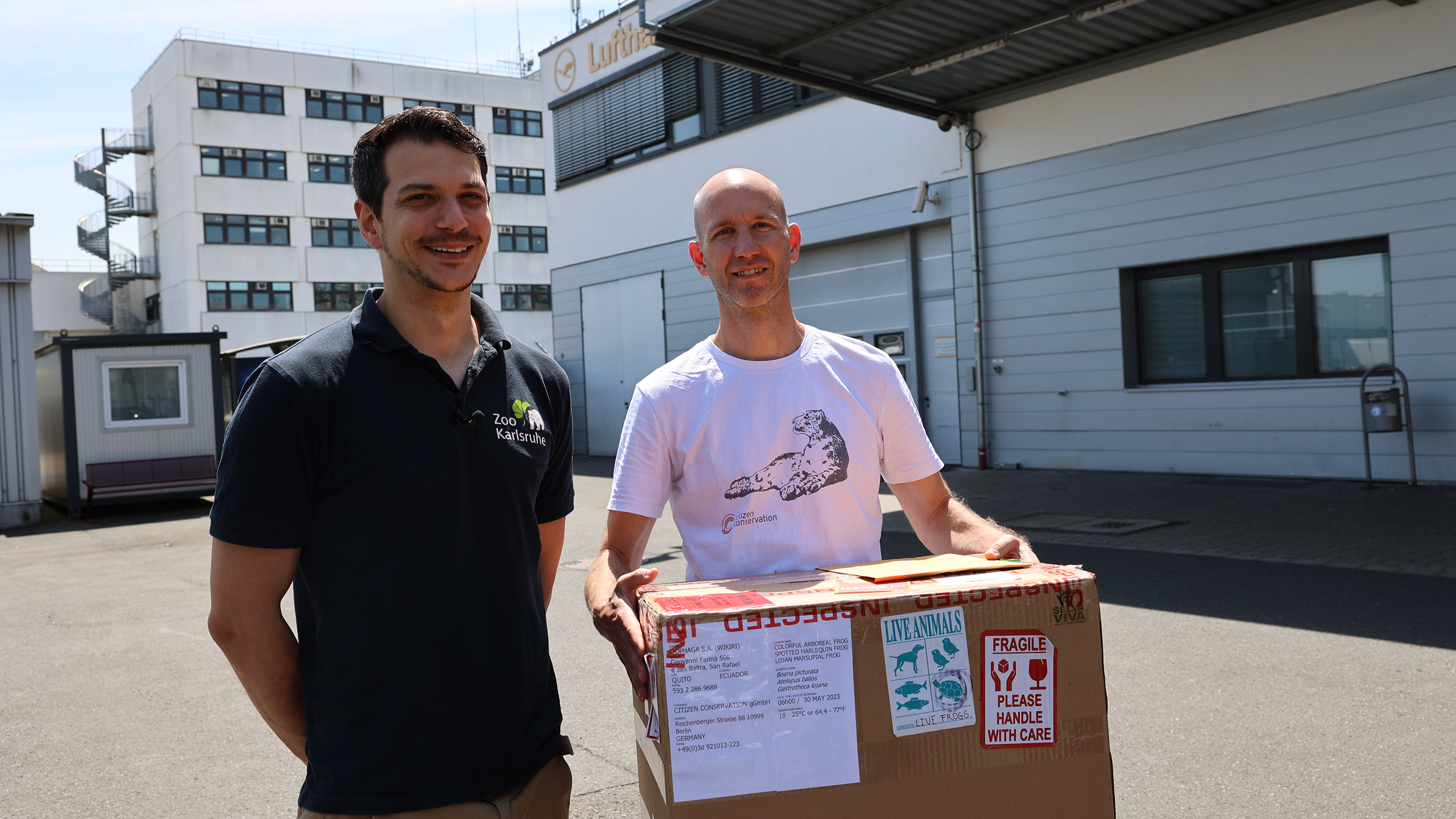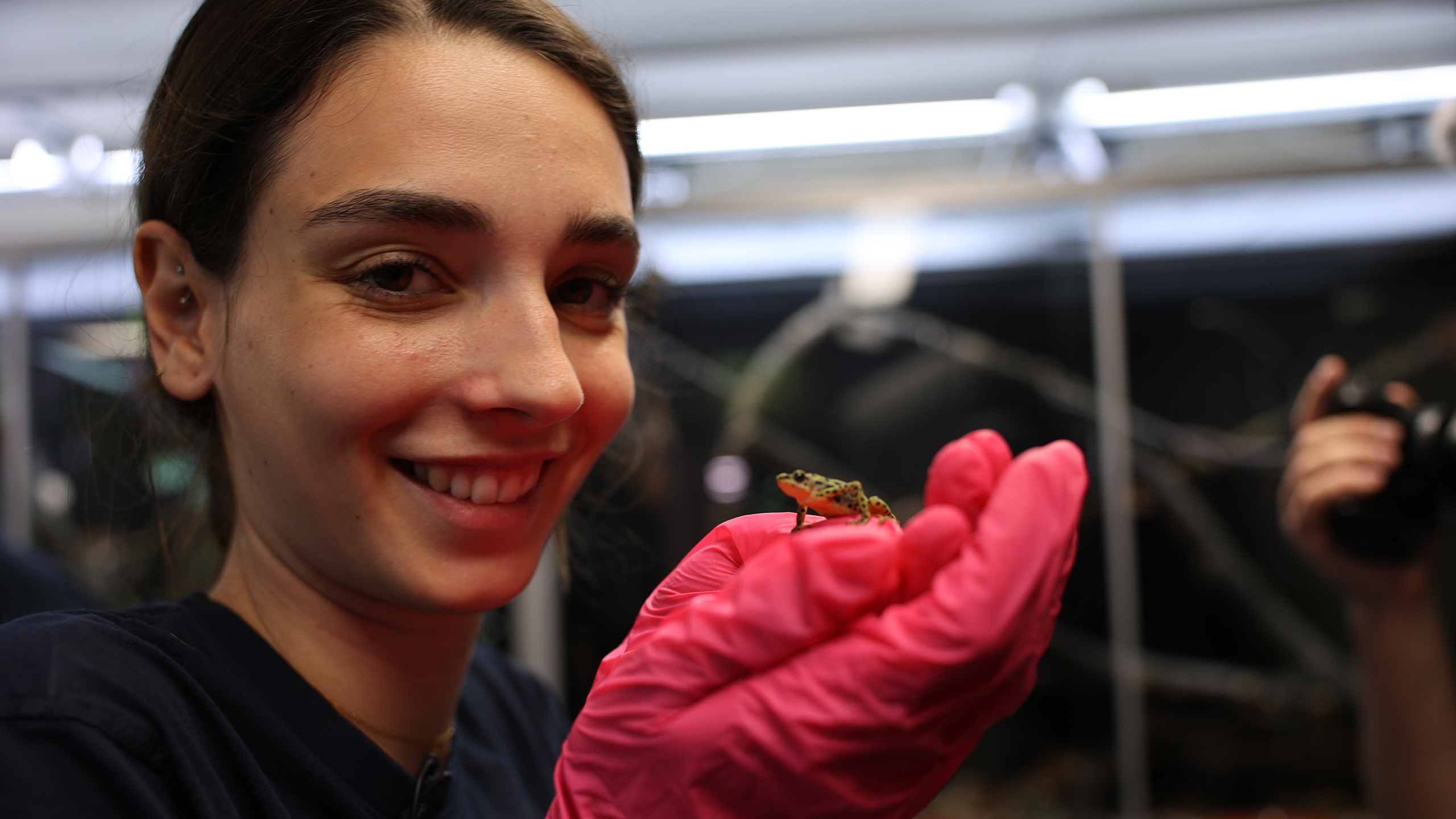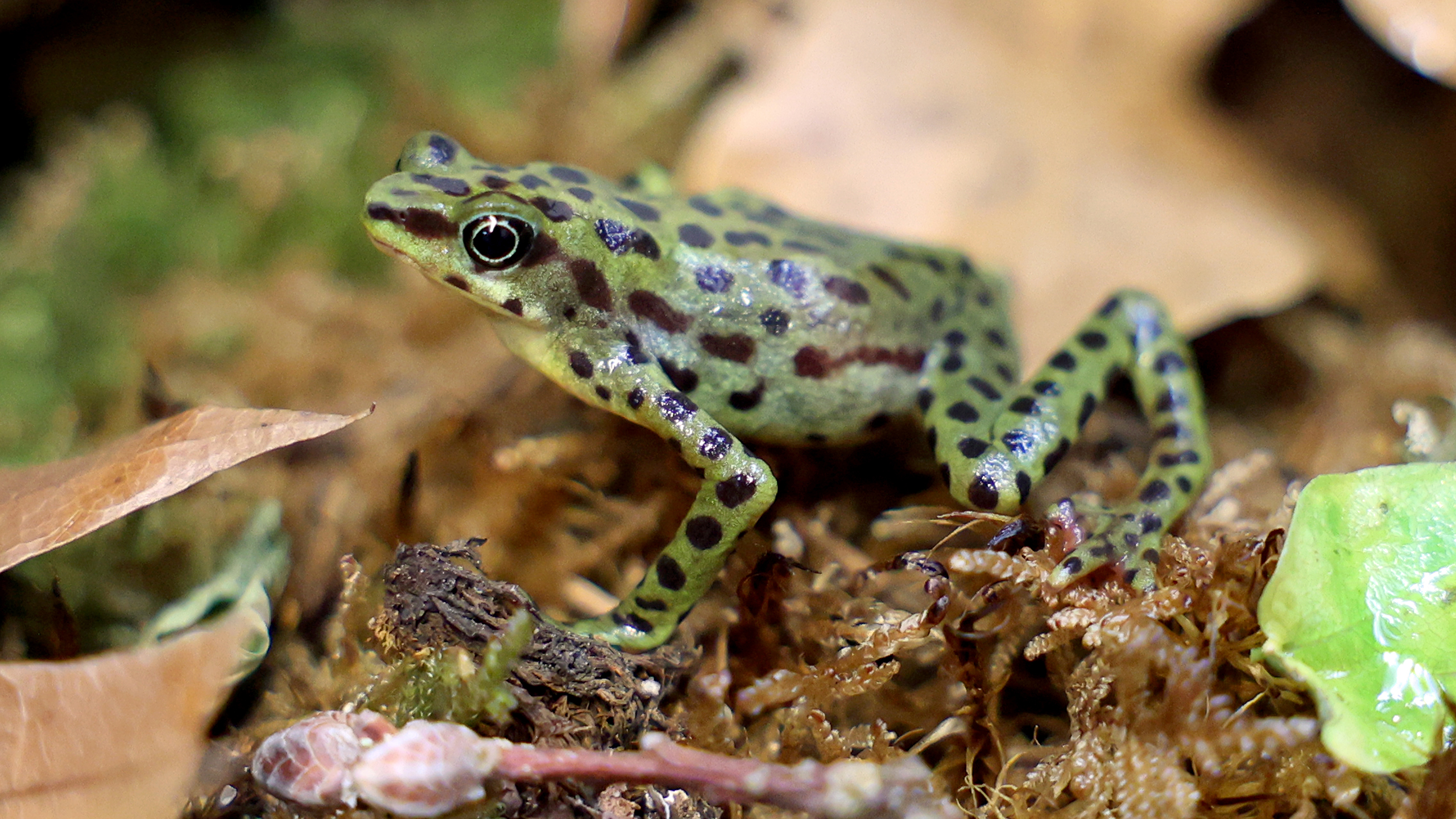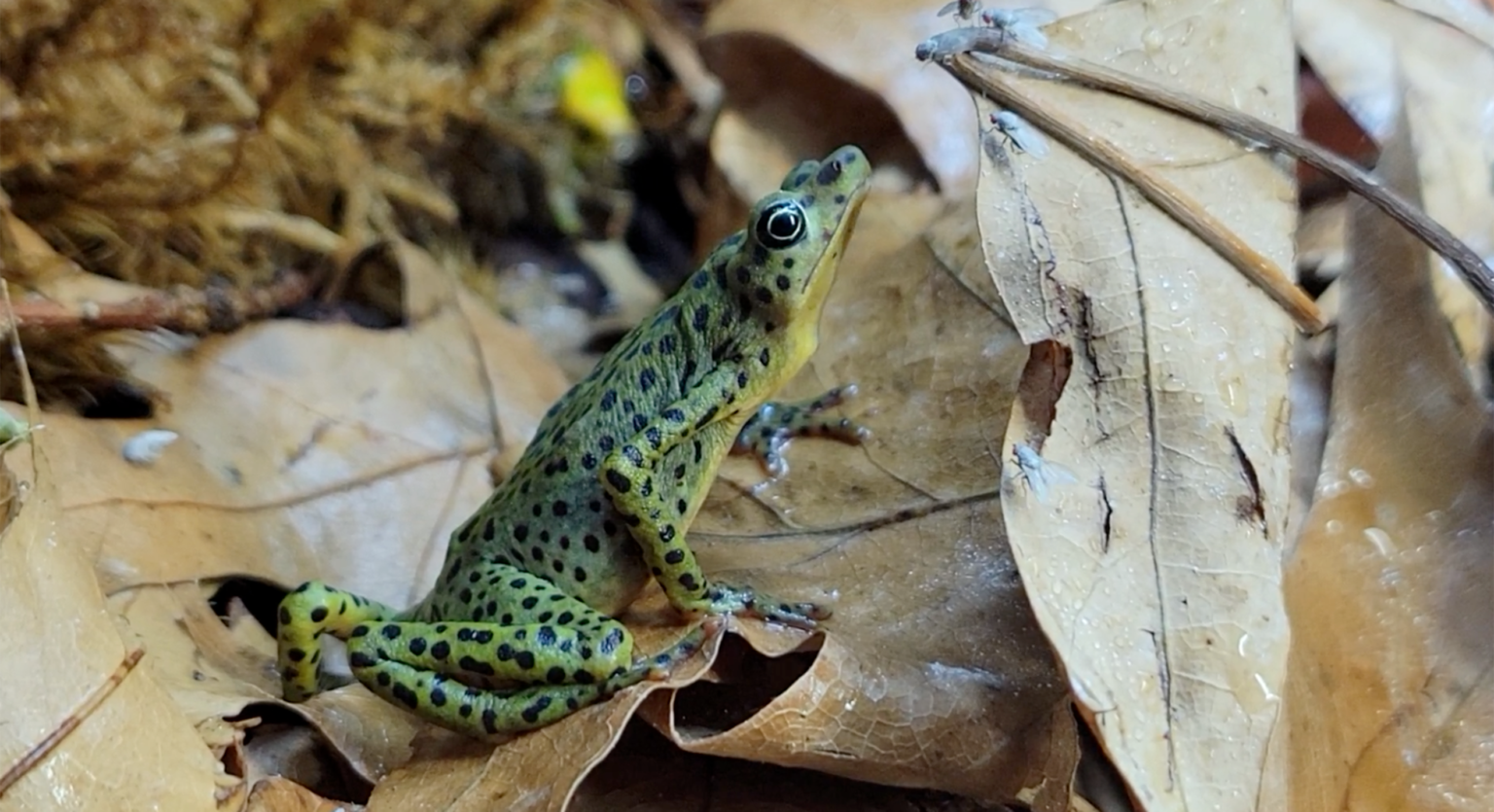Rio-Pescado-Harlekinkröte
Atelopus balios
Rio-Pescado-Harlekinkröte
Atelopus balios
Zielvorgabe CC
32 Haltende
Stand 11/2025
Zielvorgabe CC
225 Tiere
Stand 11/2025
Zielvorgabe CC
32 Haltende
Stand 11/2025
Zielvorgabe CC
225 Tiere
Stand 11/2025
Es war gespenstisch, wie in einem Mystery-Schocker. In den 1980er-Jahren verschwanden plötzlich an ganz unterschiedlichen Orten auf der Welt die Frösche. Praktisch direkt unter den Augen von Biologinnen und Naturschützern. In Costa Rica. In Australien. In Südamerika. Eine Art nach der anderen erlebte dramatische Einbrüche oder starb in wenigen Jahren aus, ohne erkennbaren Grund, manchmal in unberührten Naturgebieten.
Friedhof der Kuschelkröten
Üble Mischung: Pilz und Abholzung
Aber keine übernatürliche Kraft war der Grund für die Amphibienkrise, sondern ein Pilz. Was genau passiert ist, warum und wie er plötzlich auf mehreren Kontinenten auftauchen und seine tödliche Wirkung entfalten konnte, ist bis heute nicht geklärt. Vermutlich wurde er vom Menschen verschleppt, in Gebiete, in denen er bis dahin unbekannt war. Und traf auf Frösche und Kröten, die dem neuen Erreger wehrlos gegenüberstanden – und die ohnehin schon angeschlagen waren durch Umweltverschmutzung, Klima-Anomalien und Lebensraumzerstörung.
Von Quito nach Karlsruhe
Worst-case-Fall Stummelfußkröten
Eine Gruppe, die besonders stark betroffen ist, sind die rund 130 Stummelfuß- oder Harlekinkröten der Gattung Atelopus. Dutzende Arten der hübschen, kleinen, oft spektakulär bunten Kröten erlitten dramatische Einbußen oder starben gleich ganz aus. Warum gerade sie so anfällig für die Seuche sind, wissen wir nicht. Der Pilz wirkt auf verschiedene Arten eben ganz unterschiedlich. Auf Stummelfußkröten besonders verheerend. Aber das ist nicht ihr einziges Problem. Die oft nur kleinräumig verbreiteten Kröten leiden auch stark unter Abholzung und den Folgen von Landwirtschaft und menschlicher Besiedlung.
Sie galten bereits als wahrscheinlich ausgestorben. 2010 dann die erleichternde Nachricht: Einige Tiere hatten überlebt.
© Amadeus Plewnia
Sie ist wieder da
Die an nur wenigen Lokalitäten in den südwestlichen Regenwäldern von Ecuador vorkommende Rio-Pescado-Harlekinkröte galt als eines der Opfer der Amphibienkrise. 1995 wurden die grüngelben Krötchen mit dem hübschen Fleckenmuster zum letzten Mal gesehen, dann waren sie verschwunden. Und blieben es trotz intensiver Suche. Sie galten bereits als wahrscheinlich ausgestorben, als 2010 dann die erleichternde Nachricht kam: Einige Tiere hatten überlebt. An drei Lokalitäten im Regenwald wurden sie schließlich wiederentdeckt.
Reisen macht hungrig
Die für Citizen Conservation frisch im Zoo Karlsruhe angekommenen Rio-Pescado-Stummelfußkröten schlagen sich erst einmal den Bauch voll. © Lukas Reese
Eine neue Hoffnung
Aber für Entwarnung gibt es keinen Grund. Die Bestände gehen nach einer aktuellen Studie weiter zurück. Der Rest-Lebensraum ist von Abholzung bedroht. Deshalb haben ecuadorianische Forschende die Initiative ergriffen und die kleinen Schönheiten in menschliche Obhut überführt. Im „Centro Jambatu de Investigación y Conservación de Anfibios“ in Quito wurden die Tiere in Sicherheit gebracht und in Terrarien nachgezüchtet. Von hier aus wird nun ein Erhaltungszuchtnetzwerk an verschiedenen Orten errichtet, in Ecuador, in den USA und auch in Europa. Citizen Conservation ist mit dabei – denn wir dürfen diese fantastischen amphibischen Schmuckstücke nicht noch einmal verlieren!
Für Halter
Basisinformationen zu Biologie und Haltung
Die Kröte wird 3–4 cm lang, lebt am Boden des tropischen Regenwalds in Bachnähe. Zur Pflege von 2–5 Tieren gut bepflanztes Regenwaldterrarium (z. B. 60 x 50 x 60 cm) mit Versteckplätzen. Tagsüber 24–27 °C, nachts 21–24 °C. Kleinfutter wie Fruchtfliegen, Springschwänze, Heimchen etc. Durchströmtes Ablaichbecken und gut belüftetes Aquarium zur Larvenaufzucht erforderlich.
